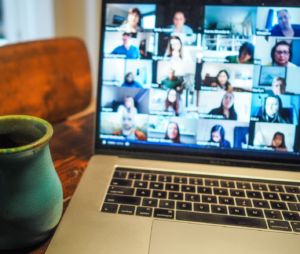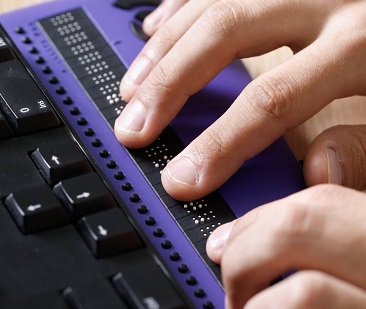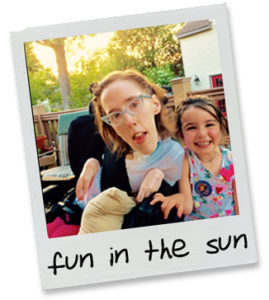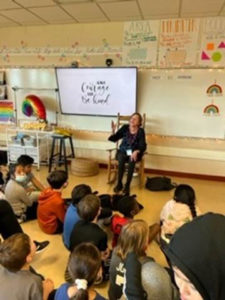Disability Committee Twitter Reactions: Why Do People Choose Cruelty Over Understanding?
by Beth Finke
 A couple of weeks ago, someone published a tweet making fun of Vice President Kamala Harris for introducing herself at a Disability Committee meeting by stating her pronouns and describing what she was wearing. The tweet comes with a link to a video so followers can hear for themselves: “I am Kamala Harris,” the vice president says. “My pronouns are she and her, and I am a woman sitting at the table wearing a blue suit.” The poster claimed it was “one of the weirdest things” they’d ever seen and said the video left them LOL=laughing out loud.
A couple of weeks ago, someone published a tweet making fun of Vice President Kamala Harris for introducing herself at a Disability Committee meeting by stating her pronouns and describing what she was wearing. The tweet comes with a link to a video so followers can hear for themselves: “I am Kamala Harris,” the vice president says. “My pronouns are she and her, and I am a woman sitting at the table wearing a blue suit.” The poster claimed it was “one of the weirdest things” they’d ever seen and said the video left them LOL=laughing out loud.
Disability advocates who responded to the tweet explained that the vice president was introducing herself to a Disability Committee, and that giving a description of her appearance like that is “accessibility protocol” for people who are blind or visually impaired.
A few followers responded with short replies like “Thanks, I hadn’t thought of that” and “Oh, that makes sense.” What was shocking was seeing how many of the loyal followers took their cue from the influencer and left rude comments about people who are blind or visually impaired — ridiculous replies like, “I wear glasses, do I count?” and “What if you’re color blind?”
Declaring something as “accessibility protocol” and the idea that people choose cruelty over understanding has left me pondering two questions:
- What makes people be this mean?
- Who decides what qualifies as “accessibility protocol”?
Pretty heady questions, eh? I had to do some research! If you ask me, we could have all the assistive technology and accessible protocol in the world, but if we can’t conquer the fear average people have about disability and address the assumptions they have about us, disability discrimination and ableism will never go away.
Philosopher Bertrand Russell said that fear is one of the main sources of cruelty, and that: “To conquer fear is the beginning of wisdom.” I don’t see enforcing “accessibility protocol” as a good way to conquer the fears people have about us – at its worse, it could leave people worrying about doing or saying the wrong thing and not engaging us at all.
Being blind or having another disability does mean we do some activities differently than someone without a disability, but “helper tools” can make nearly all activities possible. I am blind, and in the past year or so I’ve attended more and more events (live and virtual) where the speakers or participants are told to “self-describe” themselves before starting their presentations. You know, for the “benefit of people in the audience who have a visual impairment.” But asking people to describe what they look like can be awkward. It points out what people who are blind or have visual impairments are lacking.
I haven’t asked many of my friends who are blind what they think of self-describing. They might enjoy hearing people say what they look like, and if they do, that’s great. I’m not going to call them “weird” or make a joke about it just because it’s not something that personally benefits me.
As for the accessibility protocol itself, I’d like to have whoever it is who decides what accessibility protocol is to figure out who needs it, what situations come up where they need it, and think of ways to make changes less complicated. Hopefully, this way of implementing “accessibility protocol” will begin to build bridges.











